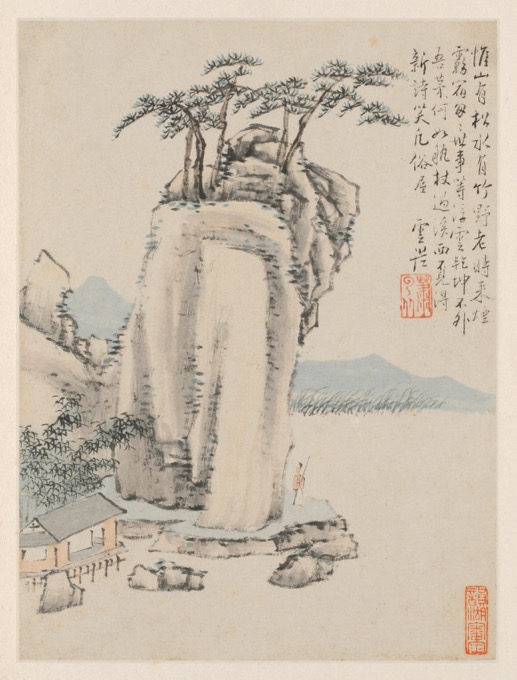Paced

Xiao Yuncong 蕭雲從: Album of Seasonal Landscapes, Leaf G (previous leaf 7) 山水圖冊 (1668)
"Slow and steady sustains a pace."
©2022 by David A. Schmaltz - all rights reserved
All activity seems to possess a pace, a rhythm most natural to its motion. This cadence doesn't always immediately disclose itself. It seems common for initial engagement to feature effort sometimes wildly out of synch with this natural one and it's not at all uncommon for the first few results to suffer somewhat from this absent understanding, too rushed or too painstakingly formed. Either can affect the quality of both the result as well as with the experience of producing the result. Initial discomfort often results from some mis-match between the adopted and the natural pace of a piece of work, and diagnosing this difficulty tends to be complicated, in that too many unknowns enter into the equation. A milling around period's often necessary before an appropriate Pace can emerge, often after investing altogether too much effort. One wonders how anyone could maintain a practice until stumbling upon a rhythm and pace that makes it easy in comparison.
I've long preached about the necessity of finding this natural rhythm but I'm realizing with repainting The Villa, that I had and still have no clue about how to induce this understanding. I cannot even reliably diagnose the presence of this problem, for it likely won't appear as some clear absence or tangled up presence. It might show as some personal shortcoming, an apparent inability, evidence only that I'm engaging in something beneath or beyond me, when I just haven't yet stumbled upon a necessary understanding. When painting, whatever's painted, a rhythm natural to that surface fairly quickly emerges. One cannot paint siding boards in the same way, in the same manner, that one paints doors, for each surface more or less demands some adjustment. With the weather forcing only intermittent engagement, I realized yesterday that I had not yet discovered quite the rhythm my painting required, as evidenced by my persistent aches and pains and endlessly feeling tired.
I caught a glimpse, though, yesterday, of just how easy the work might be. Maybe I'd just exhausted all the inappropriate rhythms available to me, or perhaps I just got lucky. I'd earlier jammed the preparation and the first two coats on that part of the wall, almost finishing the whole slice of wall in a day, but I'd paid the price for my over-enthusiasm. I spent the following few days Recuperating, wondering if I could finish this work if it continued to take so damned much out of me. But it wasn't the wall taking anything out of me, but apparently just me pushing out more than I really could afford to contribute. In my push to finish, I'd exceeded my limit, suggesting that I'd perhaps overworked the effort. I might finish if I could make the work Paced such that I might sustain engagement until it's finished. There's apparently no rushing this and no shortcuts, neither, so I'd best be maintaining some sustainable cadence.
I need not start before the neighbor's chickens sense the coming dawn. Nor should I necessarily adopt banker's hours. Can I work steadily without over-extending? I sense that such a pace might well prove excruciating. If so, do I have the stomach for the patience that pacing might require. Painting's not a steeplechase. It's not a race to leap over hurdles, or it need not necessarily be that race. I'm thinking that it might be more an occupation than a short-term stint. A manner of living. A lifestyle. I might be better for thinking of this work as more permanent, and focus less upon the ending of it and a little more upon the never-ending nature of it. It probably more qualifies as timeless effort than time bound, anyway, so focusing with the end in mind might just materially mis-categorize it and thereby induce arrhythmia. Slow and steady sustains a pace. Not even this work was ever a race.


